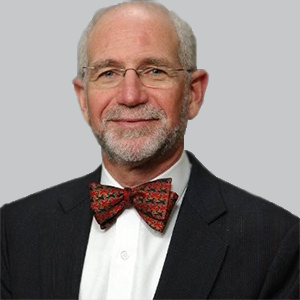Article
Discussing the Risk of Sudden Unexpected Death in Epilepsy With Patients and Caregivers
Author(s):
The pediatric epileptologist and adjunct professor of pediatrics at the University of Calgary spoke about how broaching the topic of SUDEP has gone from undiscussed to a guideline-mandated practice in epilepsy.
Jeffrey Buchhalter, MD, a pediatric epileptologist and adjunct professor of pediatrics at the University of Calgary

Jeffrey Buchhalter, MD
Although it remains the main cause of early mortality for patients with epilepsy, very little is understood about mechanisms behind sudden unexpected death in epilepsy (SUDEP).
As time has progressed, the understanding of the risk factors has improved, and patients have come to learn about the condition and have requested information. As a result, the clinical community has begun to incorporate this into the discussion. In fact, in 2017, the American Academy of Neurology and American Epilepsy Society released their first SUDEP guidelines, which state that neurologists should inform patients and caregivers of the risks of SUDEP and that patients should be informed of their individual risk.1
To discuss this topic further and find out more about how this conversation has entered the clinic, NeurologyLive sat with Jeffrey Buchhalter, MD, a pediatric epileptologist and adjunct professor of pediatrics at the University of Calgary in Alberta, Canada.
NeurologyLive: How often is SUDEP risk addressed with patients?
Jeffrey Buchhalter, MD: Ten years ago, I don't know anybody that discussed SUDEP in a physician-patient interaction. That's true across countries because, in a paternalistic way, we either didn't want to worry someone with the possibility of SUDEP or didn't know the risk.
It's been a decade since then, and things have dramatically changed. We do know the risk factors and we do know that the research says that patients and caregivers of people with epilepsy want disclosure at the time of the visit, or immediately thereafter. They want to know it, independent of risk.
When should SUDEP be discussed with patients and their parents or caregivers?
We now think it's really mandatory, with a few exceptions based on patient need. If a child or an adult has ongoing tonic-clonic seizures, it needs to be brought to the attention of the patient and caregiver that they are at the highest risk for SUDEP. There are some data that suggest that nocturnal supervision can influence the risk and prevent death, but they need to know about it. Disclosure is mandatory not only for nocturnal supervision, but to be aggressive about their own care in terms of pursuing additional medications, or surgery, or vagus nerve stimulation, or ketogenic diet.
Are there any caveats to informing even the low-risk patient group?
That’s the other part of this. Patients and families want to know about SUDEP even if they're at low risk. What that does is it puts the responsibility on the physician to have that conversation with everyone, even if it's just to say, “You might hear about this from popular press or on the internet or in patient support groups, but we want you to know that your risk is low because you or your child are not having seizures, so whatever you're doing keep it up.”
We've evolved very, very quickly in terms of physician practice from not discussing it all to discussing it with those folks that are at the greatest risk to discussing it with everyone because if we are patient- and caregiver-oriented, it's very clear that's what they want to know.
REFERENCE
1. Harden C, Tomson T, Gloss D, et al. Practice guideline summary: Sudden unexpected death in epilepsy incidence rates and risk factors. Neurology. 2017;88(17). doi: 10.1212/WNL.0000000000003685.




